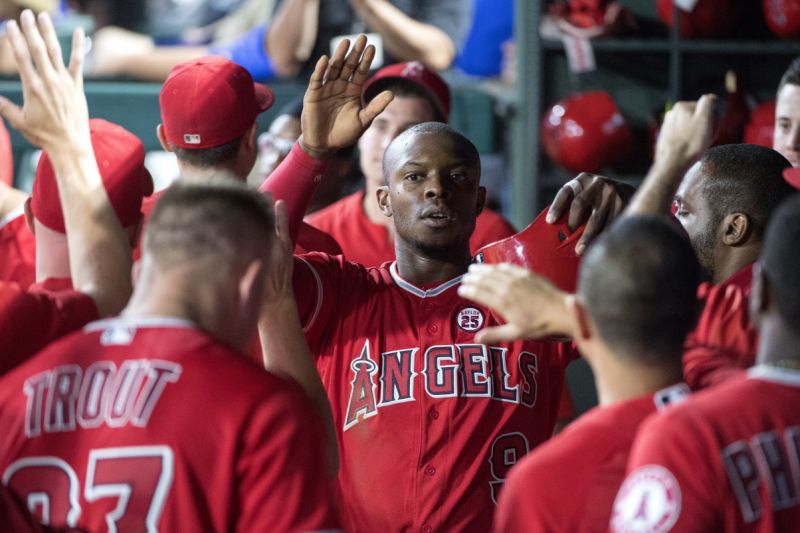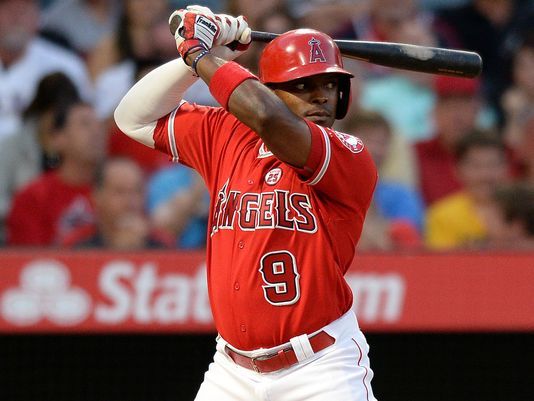By Robert Cunningham, Angelswin.com Senior Writer
Results
For 2018, Justin turned in a typical offensive-oriented season, playing below-average defense out of the left field position.
As he had done in the previous two years, he hit the 30-home run threshold while also exceeding 80 runs and runs batted in with a handful of stolen bases to boot.
Although his strikeouts were elevated, his walk and on-base percentages hovered around his career averages.
Wins Above Replacement (WAR)
In 2018, Upton was worth 3.1 WAR. This is 0.3 WAR below his 3-year running average of 3.4 WAR. Out of 22 qualified left fielders, he ranked 9th overall in WAR for 2018.
Justin is now on the wrong side of 30 years old (he will be age 31 for most of 2019) but age-related decline will probably not be an issue near-term. Aging is different for every player, so we will discuss it here, in the future, once there is evidence that his production is in decline.
Offense (wRC+)
Last season Justin produced a 124 wRC+ over 613 plate appearances (PA’s). This is in-line with his career average of 121 wRC+ and his durability on the field, as this was his 8th consecutive season with 600 or more PA’s. Out of 22 qualified left fielders, he ranked 6th in wRC+ for 2018.
Upton’s Isolated Power (ISO) was down for the year but that was primarily due to a significant number of doubles that turned into singles in 2018. In the previous two seasons he hit 28 and 44 doubles, respectively, in comparison to the 18 he hit last season.
This is likely due to an off-nominal hit distribution (sample size noise) because Justin had his highest hard-hit rate (Hard%) of his career in 2018 at 43.8%. Additionally, he pulled the ball more than usual exceeding his career average by 12.4%. The latter may be intentional as the Angels had the highest pull rate (Pull%) in baseball.
It should be noted however that Upton’s ground ball (GB%) rate was 2.3% higher than his career average, while his fly ball (FB%) was 4.5% lower than his career average. This is probably the primary reason why some of those doubles were converted to singles.
As a final note Justin stole 8 bases on a total of 10 attempts. He has never been an overly prolific base stealer (his high was 21 in 2011) and seems to prefer picking selective spots to run on opposing pitchers to keep his success rate at a productive level.
Defense (DEF)
Justin turned in another typical below-average season defensively, roaming the left field corner.
FanGraphs ‘Def’ score rated him at -7.2, which is not great, but it is not the worst. Out of 22 qualified left fielders, Upton ranked 17th based on the ‘Def’ metric.
Ultimate Zone Rating (UZR/150) was a bit kinder to Justin, giving him slightly above-average marks for range and errors, but still nicked him with an overall negative score.
This has been a known quantity for some time now and at some point over the next two years, likely after Albert Pujols retires, the Angels, if they have not traded Justin, may move him to first base or designated hitter for the remainder of his contract as the team will likely have better defensive outfielders to place there in Brandon Marsh and Jordyn Adams or potentially sliding Mike Trout over if his defense declines in center field.
Projections
The Steamer projection system sees Upton producing a nearly identical slash line in 2019 as he produced in 2018.
This makes sense considering the stage Justin is at in his career and his likely spot as a middle-of-the-order hitter in the Angels 2019 lineup. The offense may hover up and down based on how the final batting order shakes out but it should be a similar result unless Upton kicks it into a higher gear and gives us one of his not oft-seen 4+ WAR seasons.
Contractual Details
Upton will be entering the 2nd season of a 5-year, $106M contract he signed at the end of the 2017 season.
So far, the Angels have received exactly what they have paid for and perhaps a little more, so it has worked out for both sides to-date.
Justin will very likely stick around through at least 2020, as the Angels have some high-quality prospects (Marsh and Adams mentioned above) in the pipeline but they are both probably two years away from making an impact at the Major League level.
Even then the Angels could decide, if Upton continues to perform well offensively, to have Justin make the aforementioned move to first base or designated hitter if they want to keep his bat in the fold and improve the team defensively.
If Billy Eppler decides to move J-Up in trade, the team will likely need to eat some salary if they want to get a truly significant prospect or prospects back in return as his surplus value is effectively negligible.
Replacement Options
Based on Upton’s contractual length and commitment of team resources (money), it is very unlikely that the Angels will trade him. As indicated above he has minimal surplus trade value, at this time, and the Angels have no readily available options that will give them the production value Justin has provided and is projected to produce.
So with this understanding, he is a near-lock to start the season with the Halos and will likely be on the 2020 roster as well. After that the Angels will probably have other options to consider that could push Upton to a different position or allow the Angels to move him in trade.
Summary
Justin has been exactly what the Angels have asked for to-date.
He is a strong hitter behind Trout that forces opposing pitchers to pick and choose whether they want to face Mike or take their chances with Upton. Based on who the Halos place in the lead-off spot, the lineup will likely be a 2-3-4 of Trout, Upton, and Ohtani which is a formidable trio, particularly against right-handed pitchers. This should present Upton with plenty of opportunities to succeed.
Right now, Justin is a core piece of this offense that is a liability on the field. Eppler knew this going into the deal and Upton has held up his end of the bargain heading into the 2nd year of his contract and is expected to provide fair value over the remainder.
Add The Sports Daily to your Google News Feed!

